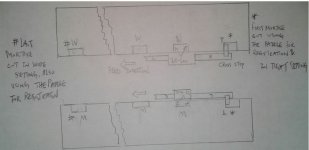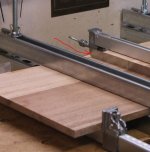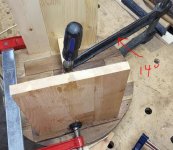Brian247028
Member
- Joined
- Feb 17, 2023
- Messages
- 9
Hello,
First post and been doing basic woodworking for a couple years. I've been asked to make a 4' x 8' conference table that is 1.5" thick out of hard maple.
To help with the alignment of the boards I picked up the DF700 as everything I typically make is 1-2" thick.
I have 2 questions.
1) When testing out the machine I used the two width settings for how tight the hole will be for the domino. The normal setting was good but I was surprised at the amount of play with the wider setting.
As I will be doing dominos the entire length of the board I was informed to do the first hole at the smallest setting for alignment and then use the wide setting for the remainder so that it's easier to get the boards glued together. Does this make sense? My concern is just how loose the dominos are at the wide setting.
2) I was going to place dominos every 12" but that means I have to eyeball the mark. I may be better off using the black guides at the widest setting to go from there.
Any input would be greatly appreciated as I feel I am in over my head but we all need to learn at some point.
My main reason for getting the DF700 was to help keep the alignment on the top flat. I was told even when doing the wide setting while it will be loose the height doesn't change so the top will be flat.
Thanks
Brian
First post and been doing basic woodworking for a couple years. I've been asked to make a 4' x 8' conference table that is 1.5" thick out of hard maple.
To help with the alignment of the boards I picked up the DF700 as everything I typically make is 1-2" thick.
I have 2 questions.
1) When testing out the machine I used the two width settings for how tight the hole will be for the domino. The normal setting was good but I was surprised at the amount of play with the wider setting.
As I will be doing dominos the entire length of the board I was informed to do the first hole at the smallest setting for alignment and then use the wide setting for the remainder so that it's easier to get the boards glued together. Does this make sense? My concern is just how loose the dominos are at the wide setting.
2) I was going to place dominos every 12" but that means I have to eyeball the mark. I may be better off using the black guides at the widest setting to go from there.
Any input would be greatly appreciated as I feel I am in over my head but we all need to learn at some point.
My main reason for getting the DF700 was to help keep the alignment on the top flat. I was told even when doing the wide setting while it will be loose the height doesn't change so the top will be flat.
Thanks
Brian





